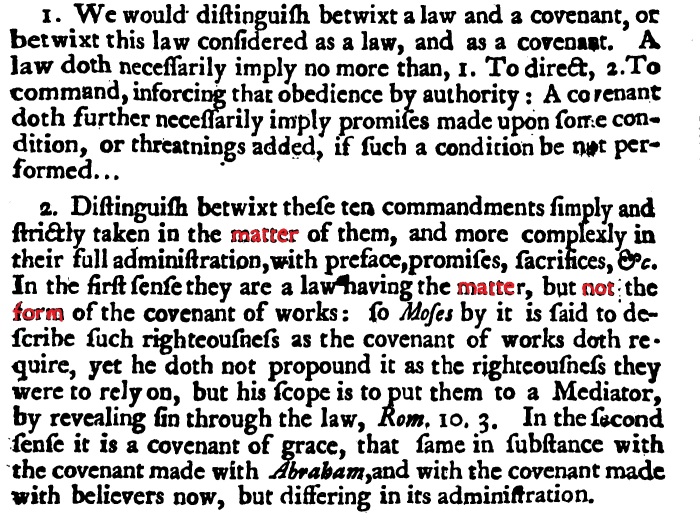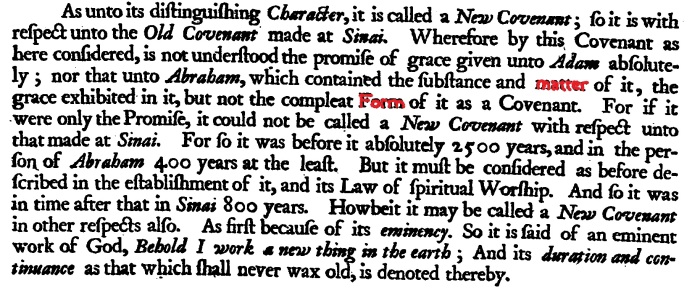In debates concerning the republication of the covenant of works within the Mosaic covenant, anyone who holds to the Westminster Confession or the London Baptist Confession confesses that the same law that was given to Adam was delivered to Moses. At the very least, then, the confessions teach a republication of the law of the covenant of works. Where things get more complicated is when we discuss how that law functioned. Was the law given to Moses as a covenant of works? That is a much larger statement than simply that the same law given to Adam was given to Moses.
To help understand how this issue works, we need to understand how the distinction between form and matter was applied to covenant theology. The formal nature of a covenant depended on its material basis. Think of matter and form. If you make something from clay (a kind of matter), then you will get a clay object (a form). Likewise for wood or stone. Different materials produce different forms. A union of form and matter is a substance. In covenant theology, if a covenant was established on the basis of law, the covenant was a covenant of works. If a covenant was established on promise, the covenant was a covenant of grace. The covenant partner would respond accordingly, with obedience to the law and reception/belief of the promise. Nehemiah Coxe shows this difference.
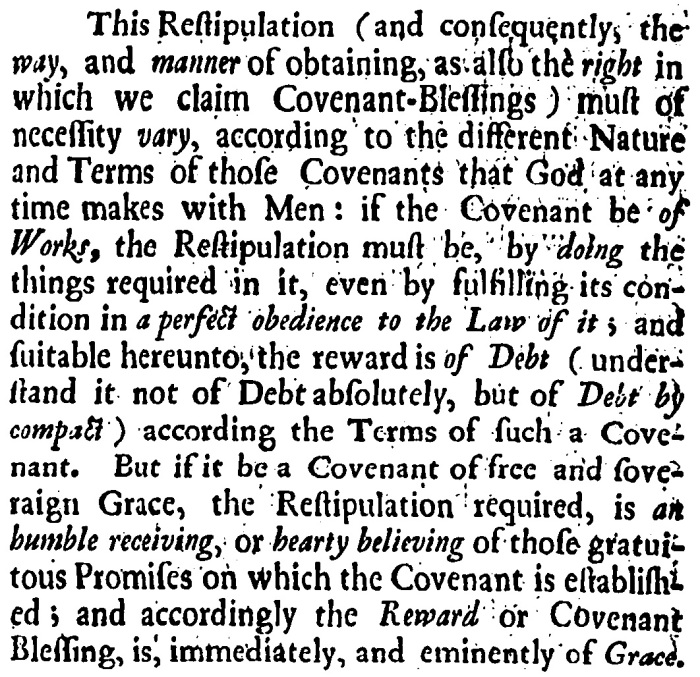
Law and promise are contradistinguished matters that produce contradistinguished forms. Because a union of form and matter is a substance, covenants that differ in substance are covenants that differ in form and matter. This is a complicated way of saying that a covenant of works and a covenant of grace are two different things. A covenant of works is built on law. A covenant of grace is built on promises. They differ in matter, form, and thus substance. Any formal covenant of works cannot be a covenant of grace.
In light of this, some have spoken of material republication and formal republication. Material republication indicates that the matter of the covenant of works, i.e. the law, was delivered to Moses. Both confessions confess this. Formal republication indicates that not only was the matter of the covenant of works delivered to Moses, but it was also the basis upon which Moses’ covenant was established. Thus the law was materially and formally republished, meaning that the Mosaic covenant was a covenant of works.
With all of this in mind, there is a significant difference between the Westminster Confession and its sister documents, the Savoy Declaration and the London Baptist Confession.
Here is WCF 19.1-2
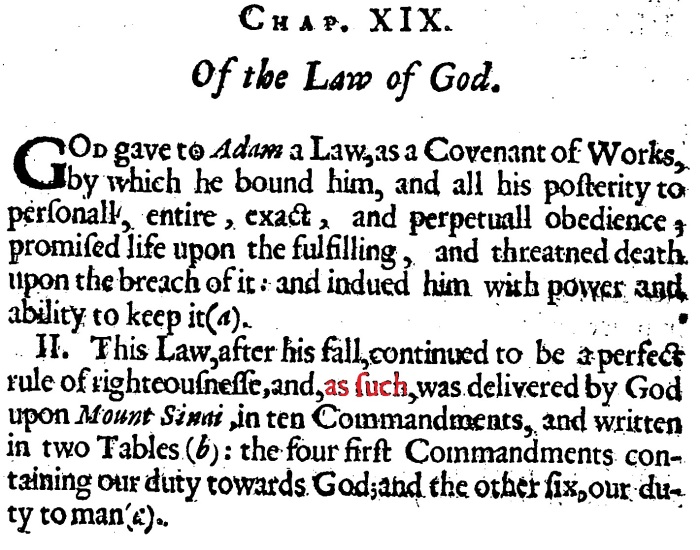
Notice the red text above: “as such.” This limits the nature of the function of the law as it was given to Moses. It was given to Moses “as a rule of righteousness“. Formal republication is of course built on material republication. But material republication, i.e. the presence of the law in the Mosaic covenant, does not necessarily entail formal republication. Just because the law is there, it doesn’t mean that the law is functioning as a covenant of works. The Westminster Confession does not go beyond material republication to formal republication. In fact, this clause “as such” specifically limits the role of the law delivered to Moses to a “rule of righteousness.” This is very consistent with the view that the Mosaic covenant is a covenant of grace (as WCF confesses). God redeemed Israel and gave them the law as the path for their grateful obedience.
The Savoy Divines and the Particular Baptists did not agree. Both confessions delete the phrase “as such.”
Savoy Declaration 19.1-2
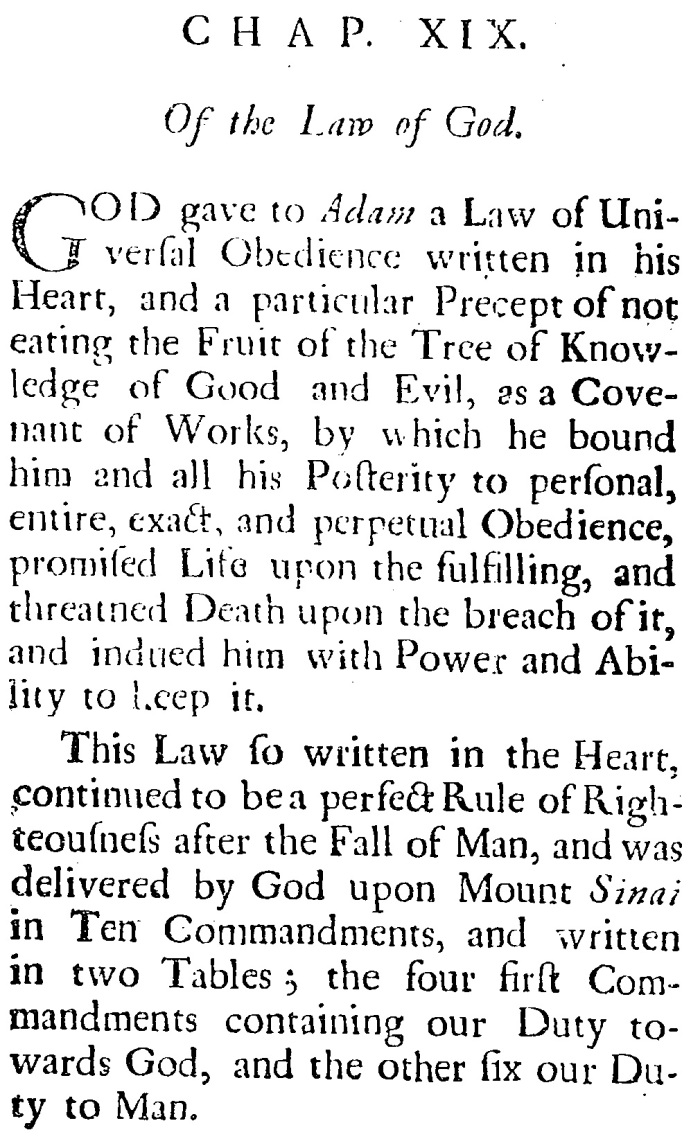
LBCF 19.1-2
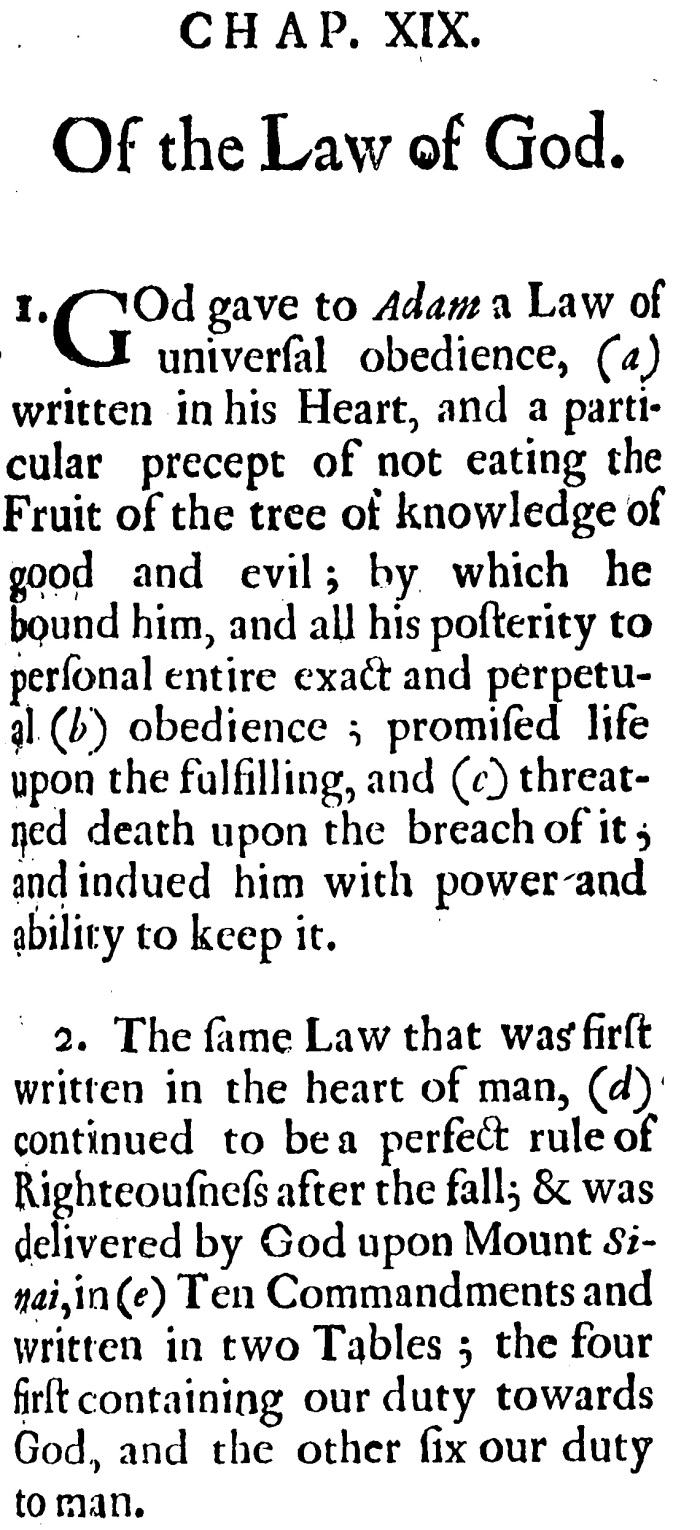
Why would they make such a deletion? Well, speaking only for the Particular Baptists, there are two fundamental reasons:
1. They believed that the old and new covenants differed in substance, not just administration. In other words, the old covenant is something other than the covenant of grace. Why did they believe that? They believed that the old covenant differed in substance because it was a covenant of works, contradistinguished from the covenant of grace. The covenant of works and the covenant of grace were materially and formally distinct, and thus substantially distinct. Andrew Ritor makes this point:
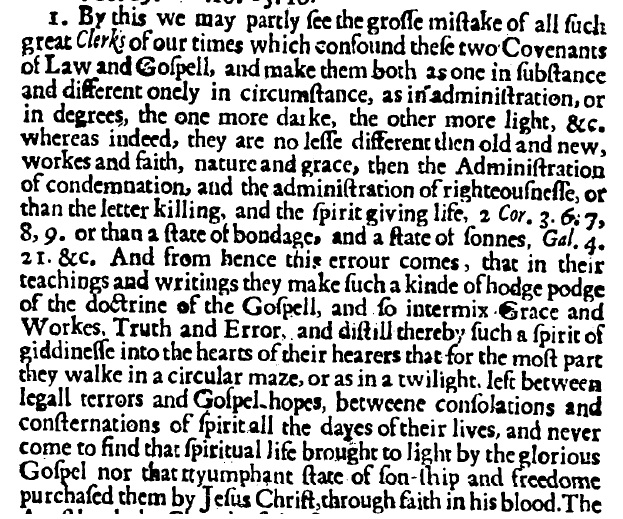
2. We already mentioned the second reason for the change in the confession, namely that the Particular Baptists believed that the law was delivered to Moses, not just as a material republication of the universal moral law of righteousness to which all men are obligated, but also as a the basis for a formal covenant of works. Clarification needs to be added here that different Particular Baptists took this in somewhat different directions. Some confined the Mosaic covenant of works to temporal life in Canaan, meaning that the Mosaic Covenant did not offer eternal life. Others, however, spoke of the Mosaic covenant as being the original covenant of works itself delivered to Israel.
Coxe is another helpful example of the former direction:
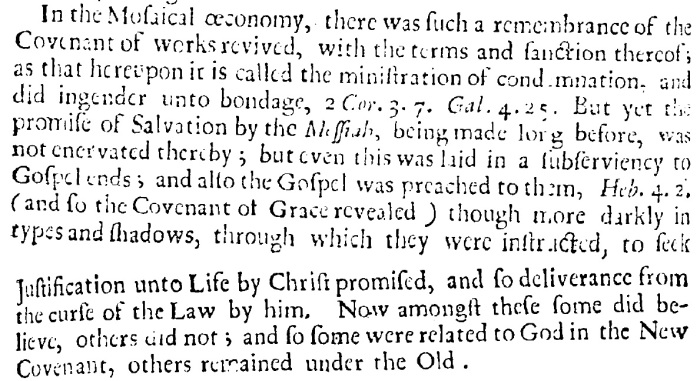
In conclusion, I want to make a few brief points.
1. Regarding the London Baptist Confession, the deletion of the phrase “as such” is not so much a positive affirmation of formal republication as it is an opening of the door wide open for it. Chapter 19 is not about the Mosaic covenant; it’s about the law. So the London Baptist Confession’s removal of the phrase “as such” is simply a refusal to restrict the giving of the law to Moses to a rule of righteousness.
2. Conversely, the WCF does not allow for formal republication. Why did so many Westminster Divines hold views beyond material republication, then? We have to remember the context of the Westminster Confession. It was a government-ordered project. It was designed to be a public standard of preaching and teaching, not to be contradicted. It was not designed for some of the subscriptional standards used by Presbyterian denominations today. To argue that since certain divines held to formal republication (or other variants thereof), the confession must allow for those views, is anachronistic. They held contradictory views, but were not to publicly contradict the confession. In an age of ever-shifting government and an ever-shifting state church, one must be careful to take the context into account. In England, the WCF as we know it did not have the impact that it had in Scotland because its final approved form had to please an Independent-controlled Parliament. The answer to the diversity of the views of the divines is not necessarily that “they must all fit within the confession because it was a consensus document.” This is especially true when many Westminster divines would gladly use the magistrate to punish those whom they deemed heretics (as they did). The London Baptist confession assigns the promotion of peace and justice as well as lawful war-waging to the civil magistrate. But the Westminster Confession assigned further powers of suppressing blasphemies, heresies, and reforming the worship of the church. Keep that in mind.
See also:
https://pettyfrance.wordpress.com/2013/03/14/confessional-subscription-and-the-westminster-assembly/
https://pettyfrance.wordpress.com/2013/06/20/the-textual-history-of-the-westminster-confession-of-faith/
3. Behind all of this is the Subservient Covenant, from John Cameron to Samuel Bolton to John Owen to the Particular Baptists. But that’s another story (and perhaps a dissertation…).
More on this here: http://contrast2.wordpress.com/2010/09/05/wcfsdflbc-19-12-and-republication/

